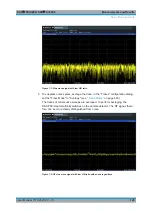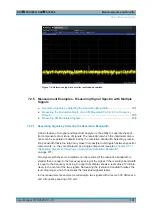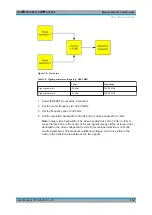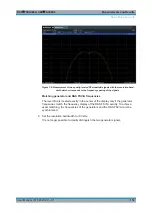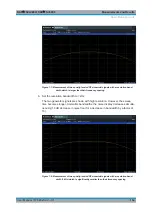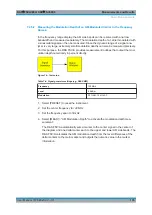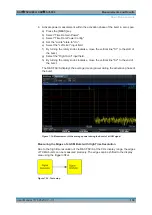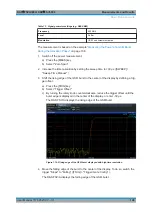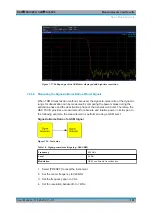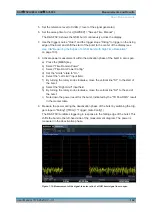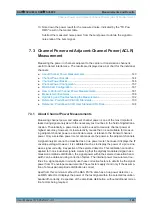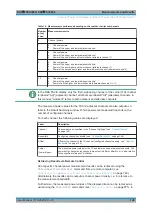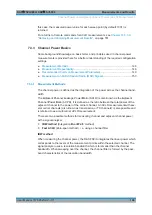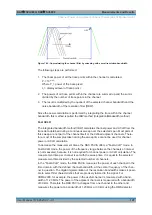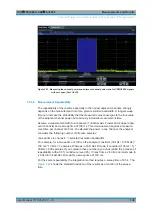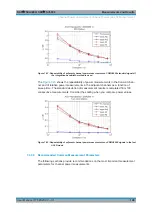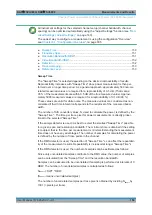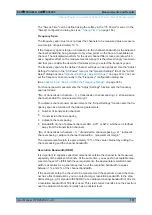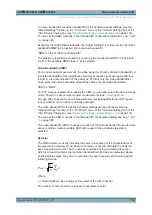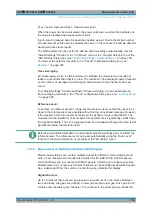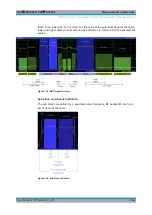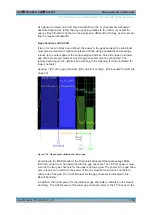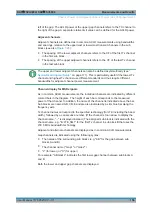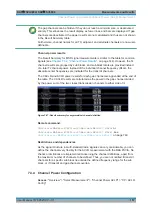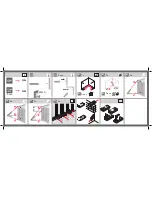
Measurements and Results
R&S
®
FSVA3000/ R&S
®
FSV3000
143
User Manual 1178.8520.02 ─ 01
10. Note down the power result for the measured noise, indicated by the "TD Pow
RMS" result in the marker table.
Subtract the measured noise power from the burst power to obtain the signal-to-
noise ratio of the burst signal.
7.3
Channel Power and Adjacent-Channel Power (ACLR)
Measurement
Measuring the power in channels adjacent to the carrier or transmission channel is
useful to detect interference. The results are displayed as a bar chart for the individual
channels.
About Channel Power Measurements
.................................................................. 143
.........................................................................................144
..........................................................................................146
............................................................................... 157
..................................................................................... 167
How to Perform Channel Power Measurements
...................................................181
....................................................................................... 186
Optimizing and Troubleshooting the Measurement
.............................................. 192
Reference: Predefined CP/ACLR Standards
........................................................ 193
Reference: Predefined ACLR User Standard XML Files
...................................... 194
7.3.1
About Channel Power Measurements
Measuring channel power and adjacent channel power is one of the most important
tasks during signal analysis with the necessary test routines in the field of digital trans-
mission. Theoretically, a power meter could be used to measure channel power at
highest accuracy. However, its low selectivity means that it is not suitable for measur-
ing adjacent channel power as an absolute value or relative to the transmit channel
power. Only a selective power meter can measure the power in the adjacent channels.
A signal analyzer cannot be classified as a true power meter, because it displays the IF
envelope voltage. However, it is calibrated such as to display the power of a pure sine
wave signal correctly, irrespective of the selected detector. This calibration cannot be
applied for non-sinusoidal signals. Assuming that the digitally modulated signal has a
Gaussian amplitude distribution, the signal power within the selected resolution band-
width can be obtained using correction factors. The internal power measurement rou-
tines in a signal analyzer normally use these correction factors to determine the signal
power from IF envelope measurements. These factors apply if and only if the assump-
tion of a Gaussian amplitude distribution is correct.
Apart from this common method, the R&S
FSV/A also has a true power detector, i.e.
an RMS detector. It displays the power of the test signal within the selected resolution
bandwidth correctly, irrespective of the amplitude distribution, without additional correc-
tion factors being required.
Channel Power and Adjacent-Channel Power (ACLR) Measurement

